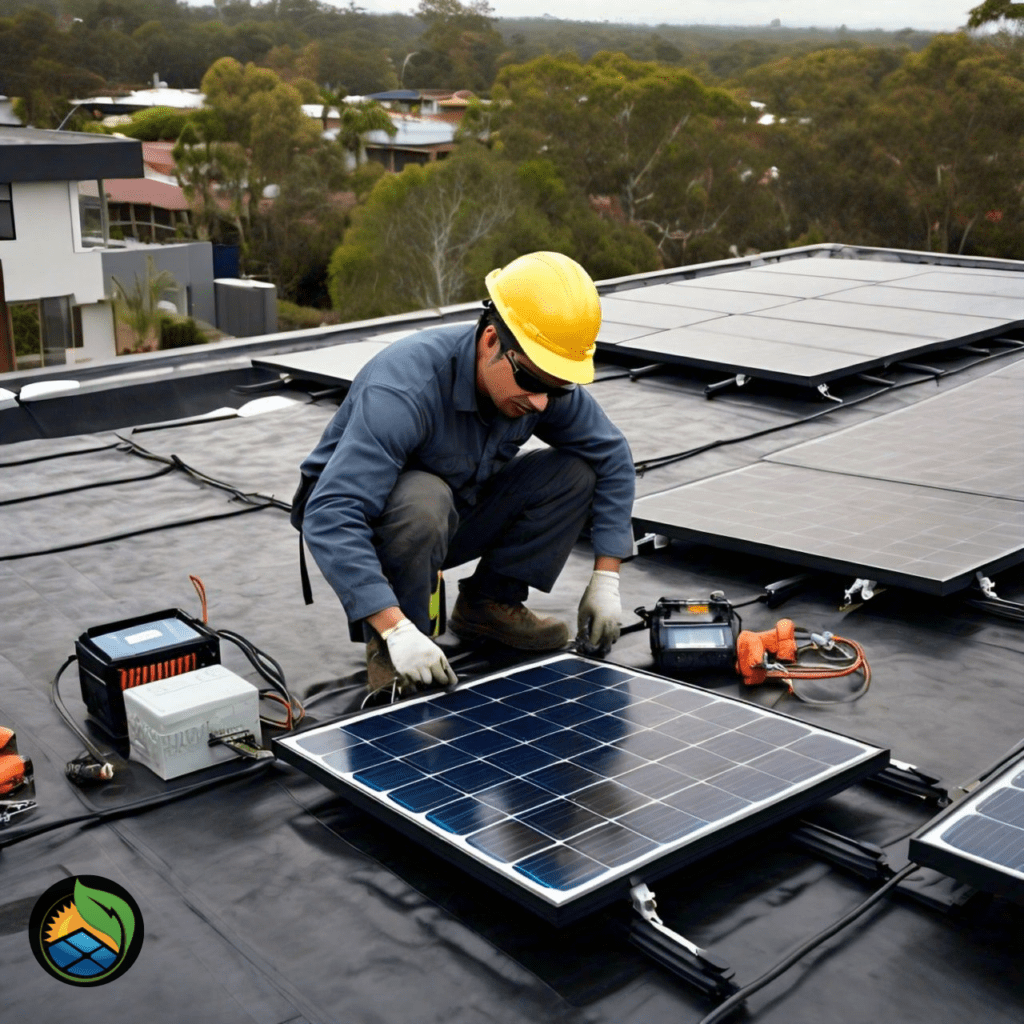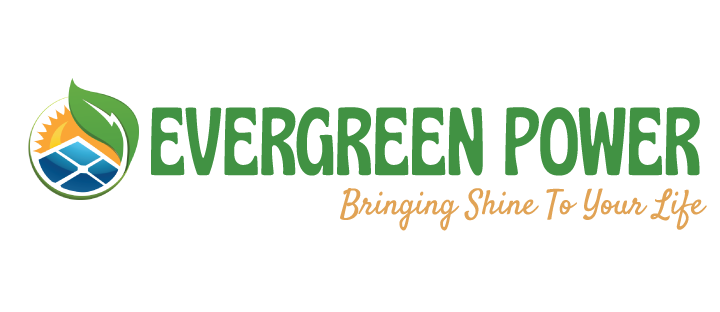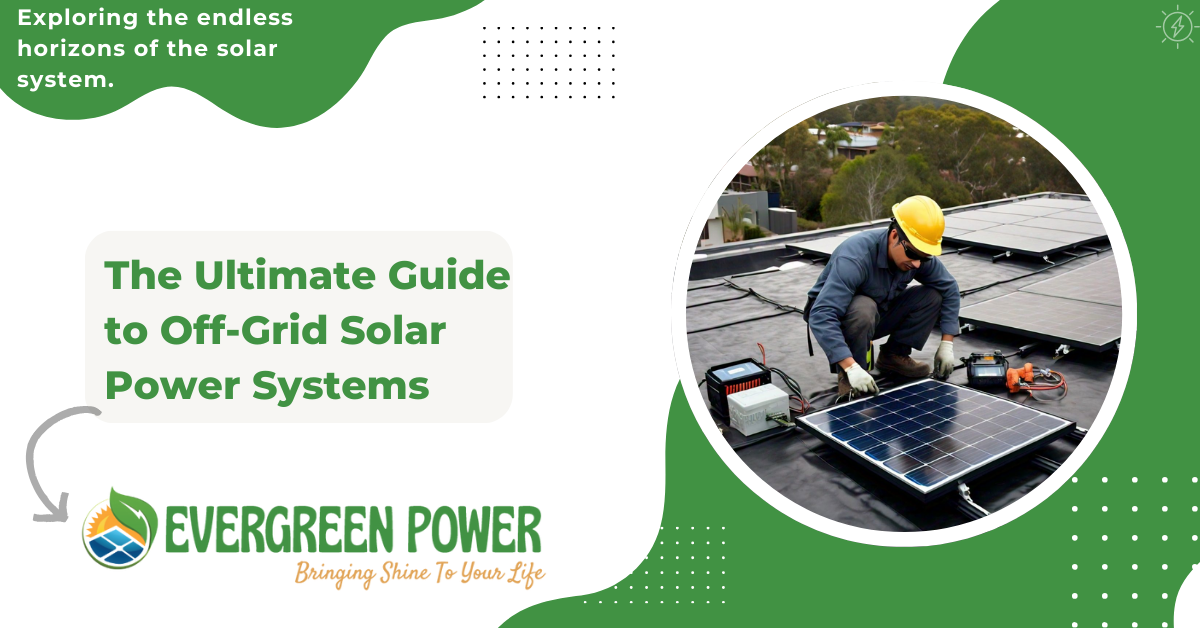Here we will explore the definition, advantages and disadvantages, necessary components, and much more of off-grid solar systems. Join me on this insightful trip to energy independence.
Off-grid solar power systems provide eco-conscious homeowners, do-it-yourselfers, and proponents of sustainable living with a compelling answer in a time when sustainability is not only a choice but a need. This thorough book is for you if you have ever thought about going off the grid and using renewable energy.
What Is an Off-Grid Solar System?
An off-grid solar system is a stand-alone, self-contained energy source that functions apart from the main electrical grid. Through photovoltaic (PV) panels, it gathers solar energy and transforms it into electricity to run houses, cottages, or other buildings. These systems are made to run even when there is no grid connection accessible, unlike grid-tied solar systems that depend on a link to the utility grid for backup power. The charge controller manages the flow of electricity between the solar panels and batteries. The inverter then converts the DC electricity from the panels into AC electricity, which is what most home appliances use. Finally, the battery bank stores excess energy for later use.
Benefits of Off-Grid Solar Systems

Energy Independence
People select off-grid solar power systems mostly for their energy independence. You are independent of utility corporations and the escalating cost of energy when you produce and store your own.
Environmental Sustainability
Off-grid solar power systems are an environmentally benign substitute for conventional fossil fuels since they use clean, renewable energy from the sun. Off-grid solar systems support a future more sustainable and lessen the impact of climate change by lowering dependence on non-renewable resources.
Cost Savings
Long-term savings can be substantial, even though installing an off-grid solar system may be more expensive initially than installing a conventional grid-tied system. Installed correctly, there are no monthly electrical expenses to worry about, and the system can run for decades.
Remote Accessibility
Solar systems off-grid are perfect for isolated or rural locations without possible grid access. Homes, cottages, and even little communities far from power lines can get electricity thanks to these systems.
Drawbacks Of Off-Grid Solar Systems
Before switching, there are certain disadvantages to take into account, even if off-grid solar power systems provide many advantages:
Higher Upfront costs
An off-grid solar system might be expensive up front, both to buy and install. Eventually, though, the long-term energy cost savings can cover this initial outlay.
Limited Power Supply
The quantity of electricity off-grid solar systems can produce and store is their limitation. This implies that there could not be enough power to cover all of your needs during times of low sunlight or heavy energy consumption. As you size your system and arrange for possible backup power sources, keep this in mind.
Regular Maintenance
To guarantee lifetime and best performance, off-grid solar systems need routine maintenance. Among these are repairing worn-out parts, checking battery levels, and cleaning panels.
Components Of An Off-Grid Solar System
Here are the key components of off-grid solar systems broken down for your better understanding of how they work:
Solar Panels
Solar panels are the backbone of any off-grid solar system, as they soak up sunshine and transform it into power. Solar panels usually consist of interconnected photovoltaic cells that, when exposed to light, generate DC electricity.
Charge Controller
One piece of electrical equipment that controls the flow of power from solar panels to batteries is called a charge controller. It protects the batteries from being overcharged or damaged, allowing them to last as long as possible.
Batteries
The batteries you choose for your off-grid system are vital since they are what will actually store the electricity that your solar panels produce. Before making a final decision, think about the battery’s size, kind, and expected lifespan.
Inverter
The inverter transforms DC electricity produced by the solar panels and battery bank into alternating current (AC) electricity that most home equipment runs. This makes a flawless connection with the electrical system of your house possible.
Designing Your Sustainable Solar Solution
Before getting started with your off-grid solar system, it’s crucial to plan and consider a few key factors:
Energy Usage
The size and components needed for your off-grid solar power depend on knowing the energy demands of your home. Among other things, figure out how much electricity you use each day or month.
Location
The location of your property can impact the effectiveness of your solar system. Selecting an installation site should take into account things like the quantity of sunshine, shade from buildings or trees, and regional weather patterns.
Budget
As was already indicated, solar systems are expensive up front. As you design your system, set a budget and take your long-term energy savings into account to make sure that
Who Should Install Off-Grid Solar Systems?
Not everyone is a candidate for off-grid solar power. They need a big initial outlay and ongoing upkeep, and they might not be able to supply enough power in times of heavy energy consumption or low sunshine.
Eco-Conscious Homeowners
If you want to lessen your impact on the environment and increase your energy independence, an off-grid solar power could be the way to go. Without using any non-renewable resources, you can produce clean, renewable energy using this choice.
DIY Enthusiasts
For those who enjoy DIY projects, installing an off-grid solar system can be a fulfilling and rewarding experience. There are plenty of resources available online to help guide you through the process.
Remote or Rural Areas
Off-grid solar systems are ideal for homes located in remote or rural areas where grid access may not be available. These systems can provide a reliable source of electricity, even in areas with limited infrastructure.
What’s the Process of Setting Up an Off-Grid Solar System?
The process of installing an off-grid solar power can be broken down into the following steps:
Assessment and Planning
The first step in setting up an off-grid solar system is to assess your energy usage and plan your system accordingly. This includes determining the size of the system, selecting components, and choosing a suitable installation site.
Gather Materials
The next step in setting up an off-grid solar power is to collect all of the required components. Solar panels, batteries, charge controllers, inverters, and any other components that may be required may be part of this.
Component Selection
Based on your energy needs assessment, select the appropriate components for your off-grid solar power. Consider factors like efficiency, durability, and compatibility when choosing solar panels, batteries, charge controllers, and inverters.
Installation
Select a suitable location for your solar panels, taking into account factors such as shading, orientation, and slope. Consider the distance from your home to the installation site and plan accordingly.
Testing and Optimization
After installation, test and optimize your system to ensure it is working properly. This may involve checking battery levels, adjusting the angle of solar panels for maximum sunlight absorption, and making any necessary adjustments.
Maintenance
Regular maintenance is crucial to ensuring the longevity and efficiency of your off-grid solar power. This includes cleaning panels, checking battery levels, and replacing worn-out components.
Change of Current
Understanding the change of current is essential. Solar panels generate direct current (DC), which needs to be converted to alternating current (AC) by the inverter for most household appliances. Ensuring a seamless conversion process is critical for the smooth operation of your system.
Storing Extra Current
Efficient energy storage is crucial for an off-grid power. Batteries store excess electricity generated during sunny periods for use during cloudy days or at night. Proper battery management and maintenance are vital to maximising their lifespan and efficiency.
Off-Grid Solar System Price in Pakistan
The cost of off-grid solar power in Pakistan varies based on the size and capacity of the system. On average, a basic off-grid solar setup can cost between Rs. 1150000 to 1350000 without net-metering charges. It’s essential to get quotes from multiple suppliers and compare the costs and features before making a decision.
What are off-grid solar systems?
Off-grid solar power are independent energy solutions that generate clean, renewable electricity without relying on the traditional power grid.
What is the drawback of an off-grid solar power?
One potential drawback of off-grid solar power is the initial investment cost, as they require purchasing and installing all necessary components for a self-sustaining energy system.
Which is better, an off-grid or an on-grid solar power?
It ultimately depends on individual needs and preferences. Off-grid power offer independence and sustainability, while on-grid systems provide the convenience of connecting to the traditional power grid.
How much does a 5 kW solar system cost in Pakistan?
The cost of a 5 kW solar system in Pakistan can vary depending on factors such as location and components used, but on average, it can range from Rs. 770000 to Rs. 900000 rupees.
What is the cost of a 10 kW solar system in Pakistan?
The cost of a 10kW solar system in Pakistan can vary based on factors such as location and components used, but on average, it can range from PKR 1,400,000 to 1,800,000. It’s important to compare quotes from multiple suppliers before making a decision.
Conclusion
Off-grid solar power systems offer a sustainable and independent energy solution for eco-conscious homeowners, DIY enthusiasts, and those living in remote areas. While the initial investment may be significant, the long-term benefits of energy independence, environmental impact, and cost savings make it a worthwhile endeavour.
If you’re ready to take the plunge into off-grid living, start by assessing your energy needs and exploring the available options. With careful planning and the right components, you can create a reliable and efficient off-grid solar power system that meets your unique requirements.

